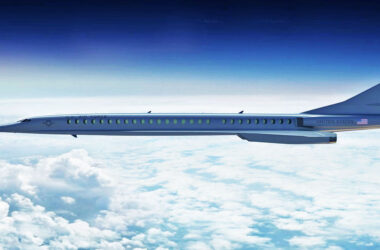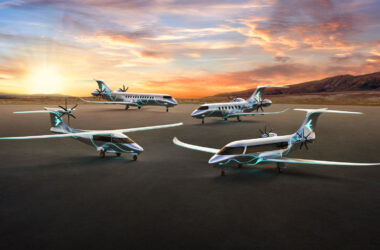Airbus has revised the schedule for the ZEROe program, which aims to enable the use of hydrogen fuel cells as a substitute for kerosene in commercial aircraft.
According to the Force Ouvriere union, the company sent a notice to employees informing them of the postponement of the project, estimated to be between five and ten years.
Airbus had hoped to put a hydrogen-powered aircraft on the market around 2035, as part of its plan to reduce its carbon footprint.
Follow us: WhatsApp | BlueSky | Google News | Instagram | LinkedIn | Facebook

The ZEROe program was announced in 2020 and aimed to convince customers, suppliers and governments to invest in hydrogen as the best technology to replace fossil fuels and reduce emissions in air travel.
Two years later, the company revealed that it would transform an A380 to carry a GE Passport engine converted to run on hydrogen on the side of the fuselage.
Airbus has presented several hydrogen aircraft concepts, from a blended-wing-body to a narrow-body jet and a 100-seat propeller-driven regional aircraft.
However, even the turboprop replacement did not appear capable of delivering significant emissions gains.

Advantage for Boeing
To make hydrogen viable in large aircraft, a large cryogenic tank would need to be carried in the fuselage, so the designs have an elongated rear section to accommodate it.
Another big challenge is creating an infrastructure at airports capable of supplying the fuel, which depends on government support.
“Hydrogen has the potential to be a transformative energy source for aviation, however, we recognise that developing a hydrogen ecosystem – including infrastructure, production, distribution and regulatory frameworks – is a huge challenge requiring global collaboration and investment,” Airbus told Reuters.
Airbus’ setback could help Boeing regain ground on projects to reduce emissions.

The US company is betting on an aircraft with a different design from the current ones, with enormous thin wings supported by struts, the so-called Transonic Truss-Braced Wing (TTBW).
The configuration allows for reduced drag and can be equipped with high-dilution ratio turbofans since the wings are far from the ground.
To confirm the potential of the technology, which aims to reduce fuel consumption by 30%, Boeing and NASA are converting an MD-90 jet to become the X-66A prototype. The goal is for it to fly for the first time in 2028.





